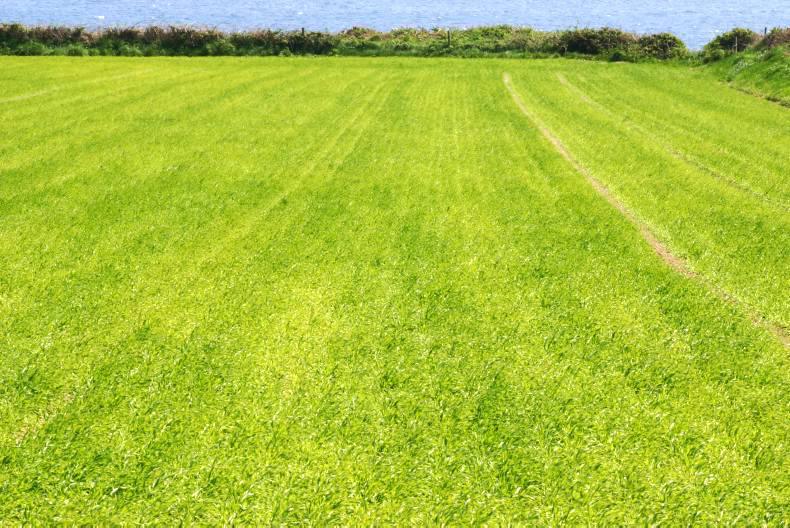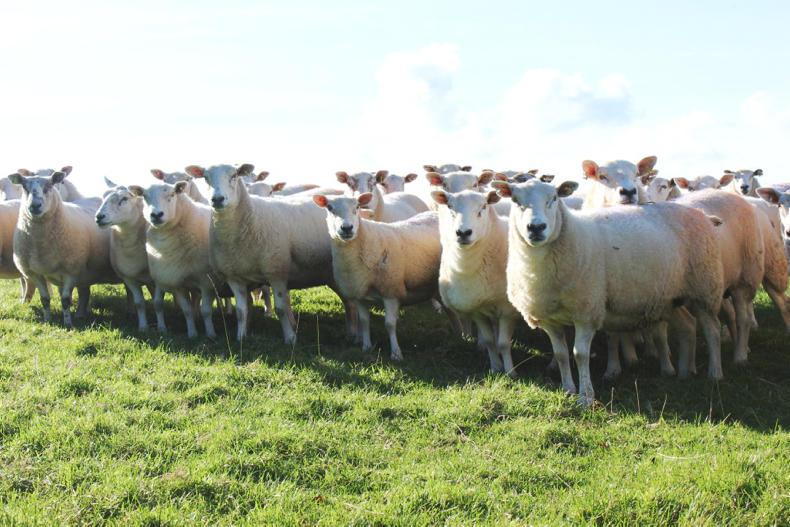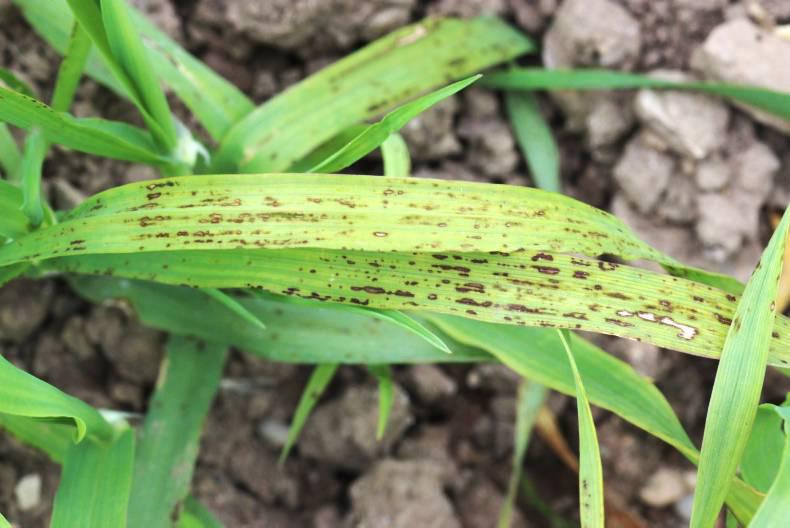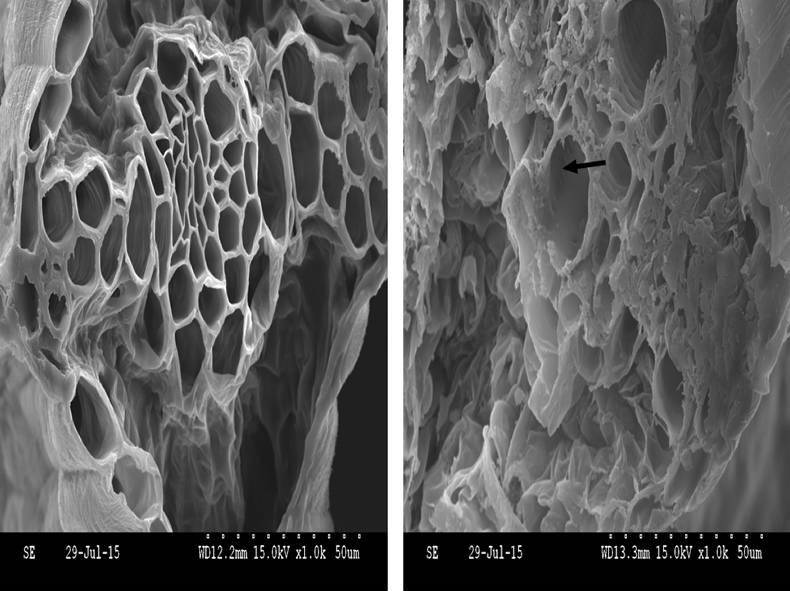As we face into planting time once again, another year of challenges lies ahead. One of these challenges is the control of trace element deficiencies in spring cereals – a problem that has become increasingly challenging as land gets more worn and longer in tillage.
There are very many solutions for trace element deficiency, but the challenge for the grower is to select one that works which can be applied in a timely manner.
Many products offered to growers remain unproven in terms of their value to Irish producers.
Up to last year, Wolf Trax fertilizer coating was one of these unproven trace element solutions, but reports from growers using the product were very favourable.
Manganese is one of the main trace element deficiencies encountered and it can manifest itself very early in the season. This poses a dilemma for growers who want to wait for further crop development before bringing in the sprayer to apply trace element along with herbicides and maybe even a fungicide.
The product
The Wolf Trax solution is different in that it is not a spray or a seed treatment. It is actually a dry dispersible powder (DPP) formulation of trace element that electrostatically adheres to each fertilizer granule.
Having the trace element on each granule provides a greater dispersal of the nutrient in the seedbed to provide a continuous supply during root growth.
In the case of Wolf Trax manganese (Mn), the coating contains a combination of manganese sulphate (MnSO4) for rapid uptake and manganese oxide (MnO) to provide prolonged release. It can be applied to any fertilizer type, but the primary use is for seedbed fertilizer incorporated into the soil.
The theory is that the crop picks up the trace element(s) as roots grow out in search of major elements so that a deficiency never gets a chance to occur, thus protecting yield potential.
Research conducted in Athy, Co Kildare, in 2014 provided field results which show definite performance from the product. The trial was conducted in a field that normally shows deficiency symptoms.
If you operate the principle that every day that a crop cannot grow to its optimum, it is more than likely losing yield potential, then the presence of clinical symptoms of any deficiency is likely to have caused a yield loss before one can even act.
So the theory of seedbed application is right. This formed the basis for seed dressings of manganese some years ago and these proved to be very successful in situations where early deficiency was likely to occur on manganese-prone land.
No more so than any other source of trace element treatment, Wolf Trax is only a temporary stopgap and it is targeted at preventing the development of early deficiency symptoms in the crop.
Its objective is to replace the need for a very early foliar treatment, but where a second treatment is generally needed, one should still be applied.
Having prevented the early onset of symptoms, the yield potential is protected and a greater benefit may be available from subsequent treatments in comparison to where symptoms were allowed to develop.
I recently came across two bits of research to verify the efficacy of Wolf Trax compared to other control measures. One of these was the Irish trial mentioned previously and the other was from Britain. Both bits of research are relatively limited, in that they are single-year results, but the research is to be repeated this year.
The Irish trial
The Athy experiment was conducted by Edna Curley from the Plant and Agribiosciences Research Centre (PABC) in NUIG. Edna looked at the use of Wolf Trax Mn-DDP on spring barley and queried if that product can give similar or improved performance as standard farmer practice on a Mn-deficient soil.
The crop of Sebastian spring barley was planted on 12 April 2014 at 155kg/ha. Fertilizer was incorporated into the seedbed at sowing, with the different products used in the different treatments. The soil pH was 7.8, phosphorous was Index 4 (13.1mg/l) and potassium was Index 2 (54.4mg/l).
The soil manganese level was put at 98ppm, which might be regarded as marginally deficient. However, soil testing for manganese is not regarded as an exact science in itself. The combination of what might be a low soil Mn level, combined with a high pH level, is seen as contributing to the potential for deficiency.
The treatments
The trial was a fully replicated plot trial (2.25m x 10m). The details of the specific treatments are shown in Table 1 and they compare a range of Wolf Trax applied manganese rates with a foliar applied treatment and an untreated plot.
The amount of physical manganese applied by each treatment is also shown.
Treatments six and seven had a second application of Wolf Trax Mn, which was applied on the CAN top-dressing on these plots.
The 0.4kg/ha rate of Wolf Trax Mn is seen as the standard field rate applied via 375kg/ha (three x 50kg bags/ac) of a compound fertilizer applied to the seedbed. The higher Wolf Trax rates, where applicable, were applied to the fertilizer at a higher rate. The cost of the 0.4kg rate is equivalent to a foliar Mn spray.
Treatment one received no manganese at all in this experiment and did not show severe visual symptoms in 2014. For treatments three, four and five, the only application of manganese was via the Wolf Trax on the fertilizer in the seedbed at different rates.
Treatments six and seven received a further application of manganese on the fertilizer during top-dressing.
Treatment eight received the lower dose of Wolf Trax manganese in the seedbed followed by a foliar application at GS39. This latter timing was also used for treatment two.
In the trial, the initial Wolf Trax applications were applied in the seedbed on 12 April. The foliar Mn applications were applied on 31 May and the second Wolf Trax application was applied with the CAN on 10 May. Soil and tissue sampling were conducted during the growing season.
The trial results in Figure 1 confirm a number of things. For some reason in 2014, manganese deficiency did not manifest itself in this field and hence the good yield in the manganese untreated plots.
The results also showed that waiting until flag leaf emergence to apply a foliar application is less likely to be beneficial compared with a much earlier application in a deficiency situation.
That said, the results clearly show the benefit of having any of the Wolf Trax treatments applied in the seedbed.
However, given that the least significant difference (LSD 5%) required to show a real statistical difference between treatments is 0.47t/ha, a treatment would have to yield 8.41+0.47 (8.88t/ha) to be statistically better than the control.
The only treatment that did this was treatment seven, which applied 0.75kg/ha Wolf Trax into the seedbed followed by a similar amount as a top-dressing.
However, in comparison with a late foliar application, all of the seedbed/fertilizer applied treatments showed a favourable yield response – they are all higher than the control and they are all also higher than the single foliar treatment.
Indeed, these results show no real benefit from the foliar treatment alone or the foliar treatment on top of the 0.4kg of Wolf Trax (T1 vs T2 and T3 vs T8).
While none of the treatments are statistically significant from each other, the results show a strong favourable trend from Wolf Trax on this site.
In a situation or trial site where the crop showed severe early manganese deficiency symptoms, it is reasonable to suggest that the results would be much more favourable.
Other factors such as the uptake and removal of manganese in the crop and grain may also be influenced by the specific application treatments.
These factors are also being assessed and Edna hopes to have data soon to indicate a comparison of the manganese efficiency of the treatments, as measured by the relationship between the quantity of manganese removed by the crop relative to the quantity applied by the different treatments.
UK results
While I do not have other Irish results to validate the suggestion that early treatment is critical for potential yield in cases of severe deficiency, the results of a spring barley trial from Yorkshire, England, supports this opinion.
This trial was on a very low manganese availability soil, also with high pH. This trial looked at more variables and compared seed treatments with foliar and Wolf Trax applications in different combinations.
In this trial, the foliar treatments were applied before tillering and early stem extension to help prevent the development of deficiency symptoms.
The description of the specific treatments used in this trial are shown in Table 2.
It was drilled on 21 March and harvested on 18 August. The actual quantity of manganese applied by each treatment is also shown.
The results of this trial are interesting. While all treatments appeared to increase yield relative to the untreated plots, as shown in Figure 2, the seed treatment and the Wolf Trax-only treatments did not result in a significant yield increase relative to the untreated.
This is hardly surprising in an extreme deficiency situation, as the deficiency will normally recur after a few weeks, resulting in the same challenge all over again.
But where these treatments were followed by supplementary foliar applications, the benefits were highly evident and significantly higher-yielding than a standard two foliar spray application.
The statistical LSD in this trial was 0.305t/ha, which makes all of the double treatments significantly higher-yielding than the double foliar spray treatment.
Basically, yields higher than 7.465t/ha produced a significantly higher yield than the double foliar spray programme – treatment three.
As stated previously, the better yields came from the double or split treatments. Treatment four (manganese seed treatment followed by a foliar spray) and treatment eight (manganese seed treatment followed by Wolf Trax fertilizer application followed by a foliar spray) produced broadly the same yield, indicating that the Wolf Trax treatment between the seed dressing and the foliar did very little.
However, where the initial treatment was the Wolf Trax Mn at 0.4kg/ha, this seemed to raise the potential for yield even higher than the seed dressing, hence the highest yield being recorded on treatment seven.
Suggestions
These trial results support the efficacy of Wolf Trax Mn as a solution to trace element deficiency.
Other trace elements can also be applied using this technology, but they may also have to be tested to verify their efficacy.
Based on these results, the use of Wolf Trax manganese fertilizer treatment looks to be a good solution for those growing highly susceptible crops like oats and barley in situations where deficiency is encountered year-on-year.
Preventing the appearance of symptoms is critical to maintaining maximum yield potential in these crops and this is best done using soil-delivered treatments like seed dressings or Wolf Trax.
The Wolf Trax options in these trials appeared to build a higher yield base while supplying part of the solution for a deficient site and enhancing the benefits of subsequent treatments.










SHARING OPTIONS